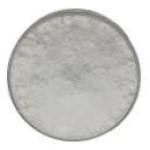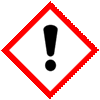CAS Number 16037-91-5, Sodium Stibogluconate BP Ph Eur Grade Manufacturers Exporters







CAS Number 16037-91-5, Sodium Stibogluconate Manufacturer Exporter
For Properties Specifications of Sodium Stibogluconate Click Properties, Specifications of Sodium Stibogluconate Manufacturer.
For Uses of Sodium Stibogluconate Click Uses of Sodium Stibogluconate Manufacturer.
For For SDS MSDS Sheet of Sodium Stibogluconate Click SDS Safety Data Sheet MSDS Sheet of Sodium Stibogluconate Manufacturer.
The Properties and Specifications of Sodium Stibogluconate:
Sodium Stibogluconate BP Ph Eur Grade Specifications
CAS 16037-91-5
DEFINITION
Sodium Stibogluconate is mainly the disodium salt of μ-oxy-bis[gluconato(3-)-c2,c3,c4hydroxoantimony]. It contains not less than 30.0% and not more than 34.0% of antimony(V), calculated with reference to the dried and methanol-free substance.
PRODUCTION
The method of manufacture is such as to ensure consistently controlled reaction stoichiometry in order to yield sodium stibogluconate that is satisfactory with regard to intrinsic toxicity.
CHARACTERISTICS
A colourless, mostly amorphous powder.
Very soluble in water; practically insoluble in ethanol (96%) and in ether.
IDENTIFICATION
A. A solution is dextrorotatory.
B. Pass hydrogen sulphide into a 5% w/v solution for several minutes. An orange precipitate is produced.
C. When heated, it chars without melting leaving a residue which yields the reactions characteristic of antimony compounds and the reactions characteristic of sodium salts.
TESTS
Stability and acidity of solution: Heat a solution containing the equivalent of 10% w/v of antimony(V) in an autoclave at 115.5C and at a pressure of 70 kPa for 30 minutes. The resulting solution is colourless or almost colourless and has a pH of 5.0 to 5.6.
Antimony(III): Dissolve 2 g in 30 ml of water, add 15 ml of hydrochloric acid and titrate with 0.00833M potassium bromate using methyl orange solution as indicator. Not more than 1.3 ml of 0.00833M potassium bromate is required.
Chloride: Dissolve 2.5 g in 50 ml of water and add 2 ml of 2M nitric acid and 75 ml of acetate buffer pH 5.0 . Titrate with 0.1M silver nitrate determining the end point potentiometrically. Not more than 3.0 ml of 0.1M silver nitrate is required.
Methanol: Not more than 2.0% w/w when determined by the method.
Loss on drying: When dried to constant weight at 130C at a pressure not exceeding 0.7 kPa, loses not more than 15.0% of its weight. Use 1 g.
The Uses of Sodium Stibogluconate:
Sodium stibogluconate is a New Drug product that has been in use by the Department of Defense for the treatment of cutaneous, mucosal and visceral leishmaniasis. Sodium stibogluconate is a medicine used to treat leishmaniasis.
The MSDS-SDS Hazard Statement of Sodium Stibogluconate:
Sodium Stibogluconate SDS, Safety Data Sheet
MSDS Sheet, Material Safety Data Sheet 27-Jan-23
1. Product Identification
Product Name & Other Names: Sodium Stibogluconate.
CAS No.: 16037-91-5
Relevant uses and uses advised against (if any): Industrial Manufacturing.
2. Hazards Identification
GHS, Globally Harmonized System Classification in accordance with 29 CFR 1910
Classification according to Regulation (EC) No 1272/2008
Acute toxicity, Oral Category 4, H302
Acute toxicity, inhalation Category 4, H332
Chronic aquatic toxicity Category 2, H411
Labeling according to GHS & Regulation (EC) No 1272/2008
GHS Label Elements  Aquatic Toxicity |
GHS Label Elements |
Signal Words: Danger
Hazard statements:
H302: Harmful if swallowed.
H332: Harmful if inhaled.
H411: Toxic to aquatic life with long lasting effects.
Precautionary statements:
P261: Avoid breathing dust/ fume/ gas/ mist/ vapors/ spray.
P262: Do not get in eyes, on skin, or on clothing.
P264: Wash skin thoroughly after handling.
P270: Do not eat, drink or smoke when using this product.
P271: Use only outdoors or in a well-ventilated area.
P273: Avoid release to the environment.
P280: Wear protective gloves/protective clothing/eye protection/face protection.
P330: Rinse mouth
P301+P312: IF SWALLOWED: Call a POISON CENTER or doctor/physician if you feel unwell.
P304+340: IF INHALED: Remove victim to fresh air and keep at rest in a position comfortable for breathing.
P305+P351+P338: IF IN EYES: Rinse cautiously with water for several minutes. Remove contact lenses, if present and easy to do. Continue rinsing.
3. Composition/Information on Ingredients
Product Name & Other Names: Sodium Stibogluconate.
CAS No.: 16037-91-5
4. First Aid Measures
Always seek medical attention after first aid measures are provided.
Inhalation: Remove to fresh air. If not breathing, give artificial respiration. If breathing is difficult, give oxygen. Get medical attention.
Ingestion: Never give anything by mouth to an unconscious person. Get medical attention.
Skin Contact: Wipe off excess material from skin then immediately flush skin with plenty of water for at least 15 minutes. Remove contaminated clothing and shoes. Get medical attention. Wash clothing before reuse. Thoroughly clean shoes before reuse.
Eye Contact: Immediately flush eyes with plenty of water for at least 15 minutes, lifting lower and upper eyelids occasionally. Get medical attention immediately.
5. Fire Fighting Measures
Flammability of the Product: Non-flammable.
Products of Combustion: Carbon oxides, Sodium oxides, Antimony oxide.
Fire Extinguishing Media: Use water spray, alcohol-resistant foam, dry chemical or carbon dioxide. Use means suitable for extinguishing surrounding fire.
Special Information: In the event of a fire, wear full protective clothing and NIOSH-approved self-contained breathing apparatus with full face piece operated in the pressure demand or other positive pressure mode. At high temperatures under fire conditions, it may produce toxic or irritating fumes. Fire-extinguishing work is done from the windward and the suitable fire-extinguishing method according to the surrounding situation is used.
6. Accidental Release Measures
Personal precautions, protective equipment, and emergency procedures: Avoid breathing dust/fumes/gas/mist/vapors/spray. Use individual protective equipment (waterproof boots, suitable protective clothing, safety glasses, etc.). Do not approach facing the wind.
Environmental precautions: Do not let the product enter drains, soil, or water sources.
Methods and materials used for containment Cleanup procedures and Storage: Avoid touching the spilled material. Contain spilled material. Do not let the product enter drains. Use a shovel to put the material into a convenient waste disposal container. Do not contaminate the environment.
7. Handling and Storage
Precautions for safe handling: Apply according to good manufacturing and industrial hygiene practices. Ensure proper ventilation. Do not ingest. Do not breathe dust. Wear suitable protective clothing. In case of insufficient ventilation, wear suitable respiratory equipment. Wash thoroughly after handling. Do not drink, eat, or smoke while handling. Avoid contact with skin, eyes, and clothing. Minimize dust generation. Avoid breathing dust/fumes/gas/mist/vapors/spray. Keep container tightly closed. Avoid ingestion and inhalation. Use individual protective equipment (waterproof boots, suitable protective clothing, safety glasses, etc.).
Conditions for safe storage, including any incompatibilities: Store in cool, dry, and ventilated area away from heat sources and protected from sunlight in tightly closed original container. Keep air contact to a minimum. Do not leave the material container open. Store protected from heat, sparks and ignition sources and incompatible materials. Avoid contact with skin and eyes. Avoid inhalation of dust/mist/vapor. Do not store with incompatible materials like strong oxidizing agents.
8. Exposure Controls/Personal Protection
Airborne Exposure Limits: TWA 0.5 mg/m3 USA, Occupational Exposure Limits, (OSHA) - Table Z-1 Limits for Air Contaminants.
Ventilation System: A system of local and/or general exhaust is recommended to keep employee exposures as low as possible.
Personal Respirators (NIOSH Approved): For conditions of use where exposure to dust or mist is apparent and engineering controls are not feasible, a particulate respirator may be worn.
Skin Protection: Wear protective gloves and clean body-covering clothing.
Eye Protection: Use chemical safety goggles and/or full face shield where dusting or splashing of solutions is possible. Maintain eye wash fountain and quick-drench facilities in work area.
Other Control Measures: Maintain good housekeeping in work area. Handle in accordance with good industrial hygiene and safety practice.
9. Physical and Chemical Properties
Appearance: Solid white powder or lumps.
Odor: It is odorless.
Odor threshold: Not available.
pH: <1 @ 50g/liter.
Relative density: Not available.
Melting point/freezing point: Not available.
Initial boiling point and boiling range: Not available.
Flash point: Not available.
Auto-ignition temperature: Not available.
Decomposition temperature: Not available.
Upper/lower flammability or explosive limits: Not available.
Vapor pressure: Not available.
Vapor density: Not available.
Evaporation rate: Not available.
Flammability (solid, gas): Not available.
Partition coefficient: n-octanol/water: Not available.
Solubility(ies): Not available.
Viscosity: Not available.
10. Stability and Reactivity
Stability: Stable under ordinary conditions of use and storage.
Hazardous Decomposition Products: It emits fumes, oxides of carbon and antimony oxide when heated to decomposition.
Hazardous Polymerization: Will not occur.
Incompatibilities: Strong oxidizing agents.
Conditions to Avoid: Incompatibles heat and moisture.
11. Toxicological Information
Toxicity data
LD50 Intraperitoneal - Mouse - 33 mg/kg
Carcinogenic Effects: No component of this product present at levels greater than or equal to 0.1% is identified as probable, possible or confirmed human carcinogen by IARC, ACGIH, NTP, OSHA.
Mutagenic Effects: Not available.
Developmental Toxicity: Not available.
12. Ecological Information
Environmental Toxicity: It is toxic to fish. Harmful to aquatic life in exceptionally low concentrations.
Persistence and Degradability: No information available.
Mobility: No information available.
Bioaccumulation/ Accumulation: No information available.
Results of PBT and vPvB assessment: No data available for assessment.
13. Disposal Considerations
Whatever cannot be saved for recovery or recycling should be managed in an appropriate and approved waste disposal facility.
14. Transport Information
DOT USA, TDG Canada & ADR/RID Europe: Not controlled.
IMO/IMDG: Not controlled.
IATA: Not controlled.
15. Regulatory Information
USA:
SARA 311/312 Hazards: See section 2.
California Prop. 65 Components: Not listed.
16. Other Information
Disclaimer:
**************************
Our company provides this MSDS sheet in good faith but makes no representation as to its comprehensiveness or accuracy. This SDS sheet is intended only as a guide to the appropriate precautionary handling of the material by a properly trained person using this product. The above information has been compiled from various sources and has the possibility of discrepancy and being out-dated information. Individuals receiving the information must exercise their independent judgment and do further search in determining its appropriateness for a particular purpose. In no case shall our company be liable to loss or damages by the product user.
**************************
Anmol Chemicals & Pharmaceuticals Pvt. Ltd. is an off-shoot of Anmol Chemicals Taloja. It is located in MIDC Taloja and it is manufacturing pharmaceutical grades of API, Excepients, Food grade and Reagent grade chemicals. Anmol Chemicals & Pharmaceuticals Pvt. Ltd. is a several decades old group of companies, engaged in manufacturing, supplying, distributing, wholesale supplies for actual users, retail or small pack supplies for research and development chemicals, fine and speciality chemicals, pharmaceutical excipients, mineral fortifiers in chemically pure, Analytical reagent grade, IP BP USP Ph Eur EP JP and other pharmaceutical grade monograph including FCC Food grade chemicals and Nutraceuticals, Mineral Fortifiers at best prices.

Sodium Stibogluconate Structure
CAS Number 16037-91-5, Sodium Stibogluconate Manufacturer Exporter
ANMOL CHEMICALS & PHARMACEUTICALS Pvt. Ltd.
India, USA, Europe, UAE
TELEPHONE: +912223770100
Navi Mumbai, INDIA
e-mail: info(At the rate i.e. @)anmol.org
Copyright. 12-nov-24
We manufacture:
Dihydroxyaluminum Sodium Carbonate
Calcium Gluceptate or Calcium Glucoheptonate
Calcium Magnesium Lactate Gluconate
Fluorescein Sodium or Fluorescein Disodium
Hydrated Manganese Glycerophosphate


